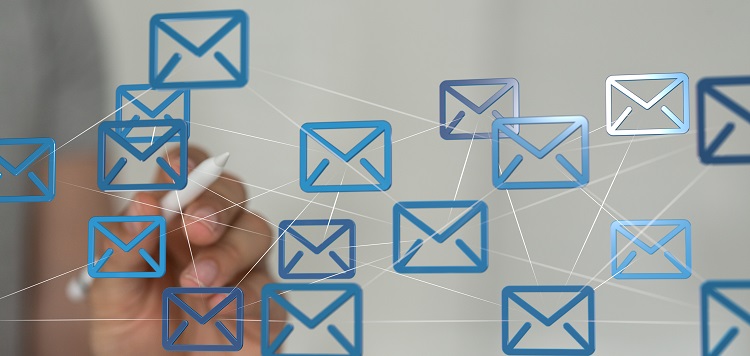In today’s fast-paced society, it’s easy for people to forget important tasks or deadlines. Whether it’s a meeting, an event, or a payment, reminders are necessary to keep people on track. However, sending reminders can often come across as nagging, unprofessional, or even rude. That’s where friendly reminder emails come in. In this article, we will discuss the importance of friendly reminder emails and how to write them effectively.
The Importance of Friendly Reminder Emails
Friendly reminder emails serve as a communication tool to gently jog the recipient’s memory and prompt timely completion of tasks or actions. They are necessary in situations where deadlines, appointments, or expectations need to be met. In business, sending a friendly reminder email can help avoid missed deadlines that can lead to confusion, delays, or penalties. On a personal level, friendly reminder emails can be useful for making sure friends or family members do not forget important events or milestones.
The tone of a friendly reminder email is critical in ensuring that the recipient responds positively rather than with resentment or annoyance. In general, the tone of a friendly reminder email should be polite and professional while conveying a sense of urgency. It’s essential to use active language that motivates the recipient to take action without sounding bossy or overbearing. Here are some tips on the tone of friendly reminder emails:
Just a quick reminder that we need your completed reports by the end of the day. We kindly request that you make this a priority as our team is dependent on these reports to proceed with upcoming tasks. Thank you for your cooperation and promptness.
When reminding someone of a task that is not urgent or formal, you can choose to use simple and relaxed language to prompt action. Instead of saying “Please complete the task immediately,” you can say “Whenever you have a moment, can you kindly complete the task?”
Using Attention-Grabbing Subject Lines
The subject line of your friendly reminder email can make a big difference in how quickly it gets noticed and acted upon. A straightforward and direct subject line can grab the recipient’s attention and prompt a response. Here are some options for attention-grabbing subject lines:
Here are a few examples of how you can add “Action Required,” “Request,” or “Reminder” to your text:
– Action Required: Please fill out the attached form and return it to our office by the end of the day.
– Request: I kindly request that you send me the monthly report by tomorrow morning.
– Reminder: Just a friendly reminder that our meeting is scheduled for 2:00 PM today in the conference room.
Adding these keywords makes it clear that the email requires the recipient’s attention immediately. These words work best in business or more formal situations.
Timing reminders for meetings, events, and deadlines
Timing a reminder email correctly is crucial to ensure that the recipient has enough time to prepare or complete the task. Here are some suggested timelines for sending reminder emails for different situations:
One to two days ahead of upcoming meetings
To ensure that attendees don’t forget the time or date of the meeting, send a reminder email one to two days before the scheduled meeting.
Three to 14 days before upcoming events
For events, it’s helpful to send a reminder email anywhere between three to 14 days before. This time frame is ample enough for people to plan ahead or make any necessary arrangements.
It varies by project and upcoming deadlines
The timing of reminder emails for deadlines is more project-specific. It is best to look at the completion date and work backward, allowing enough time for the task’s full completion. It is also helpful to communicate with the recipient about the deadline and agree on an appropriate reminder schedule.
One day after the due date for past-due payments or deadlines
When someone misses a deadline, it’s easy for them to forget that they owe anything at all. A reminder email one day after the due date can prompt them to resolve the issue immediately.
Following up after job applications and interviews
In business, following up after job applications or interviews can make a big difference in whether or not you get the position. Here are some guidelines to follow:
Waiting five to 10 business days to follow up on job applications
After submitting a job application, wait around five to ten business days before sending a friendly follow-up email. It shows that you are eager to hear back but not desperate.
Waiting until after the agreed-upon timeline to send a reminder email for job interviews
If the hiring manager has given you a timeline, wait until after the deadline has passed before sending a reminder email. That way, you won’t come across as impatient or unprofessional.
Best practices for all friendly reminder emails
Regardless of the situation, some best practices apply to all “friendly reminder” emails. They include:
Can this be done?
It is essential to keep the language simple and clear so that the recipient quickly understands the email’s purpose.
Certainly! Is there anything else I can assist you with?
Using a kind tone can make a difference in how someone responds; they may feel more positive or less like they’re being scolded.
In conclusion, writing effective friendly reminder emails requires a delicate balance between professionalism, urgency, and kindness. The timing of the reminder email and the right tone can make a big difference in the recipient’s response. By utilizing the tips provided in this article, you can craft friendly reminder emails that are both effective and well-received.

